This time, 6cm thick AC-20C asphalt mixture is used under the road surface layer as an example.
1. Construction preparation
(1) Mechanical preparation
Organize and implement mechanical equipment, Tools must be inspected before entering the site, and the performance of each construction equipment must be stable and reliable, and the operators must be certified to work.
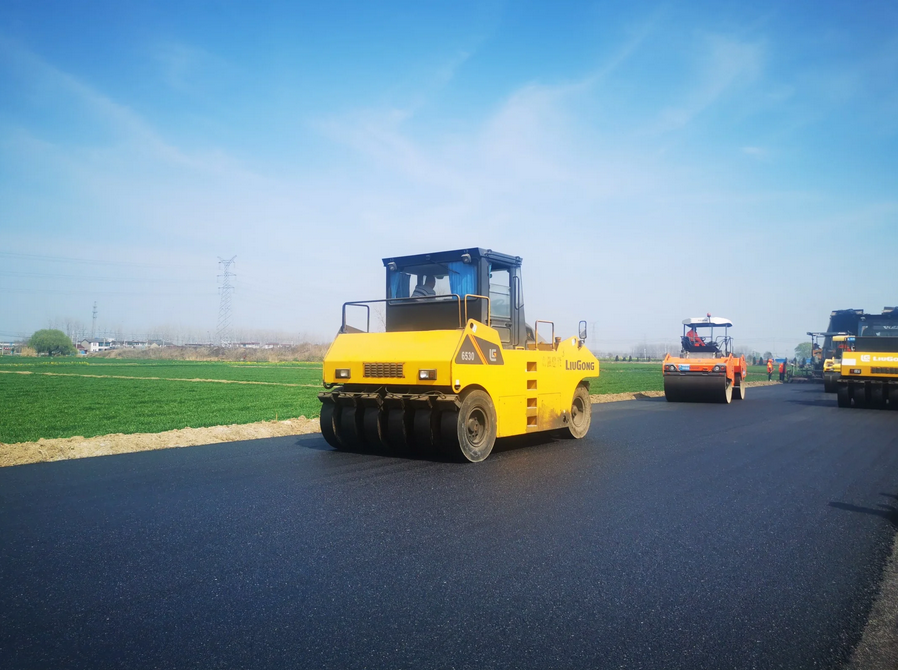
Rubber tire roller
(2) Measurement and setting out
Retest and encrypt wire points and level points before starting construction , the positions of conductor points and leveling points must be firm and reliable, the data must be credible, and the supervision must be reviewed and approved. Accurately determine the position and elevation of the center and side piles of the line and fix the main control piles of the line.
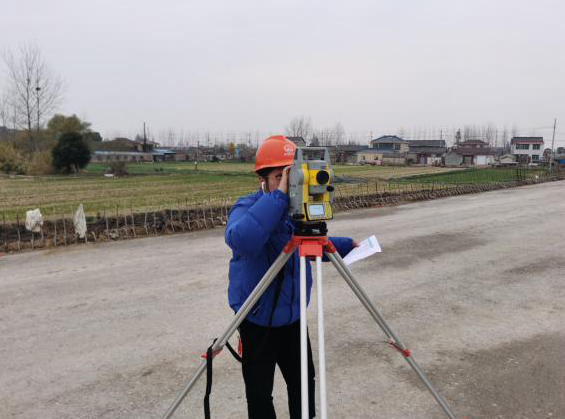
Measuring and setting out
(3) Test preparation
① Penetration and ductility of modified asphalt , softening point, etc. are inspected, and the performance indicators of the modified asphalt meet the requirements of the bidding documents and specifications;
② Test various indicators of filler mineral powder. Comply with bidding documents and specification requirements.
③Mixing ratio design
Select materials that meet design and specification requirements, refer to specifications and Based on the information provided by the design drawings, the mineral material gradation and asphalt dosage are determined using methods such as Marshall test. The production mix ratio is designed through hot material screening, and finally the production mix ratio is verified by trial mixing.
2. Treatment of reflective cracks in cement-stabilized gravel base
In order to reduce or delay the reflection cracks of the semi-rigid base layer on the asphalt surface layer, fiberglass gratings are used to treat the shrinkage cracks of the cement-stabilized gravel base layer.
(1) Check the distribution of cracks.
(2) Clean the base layer, 1m on both sides of the crack Sweep, blow dust and clean the area.
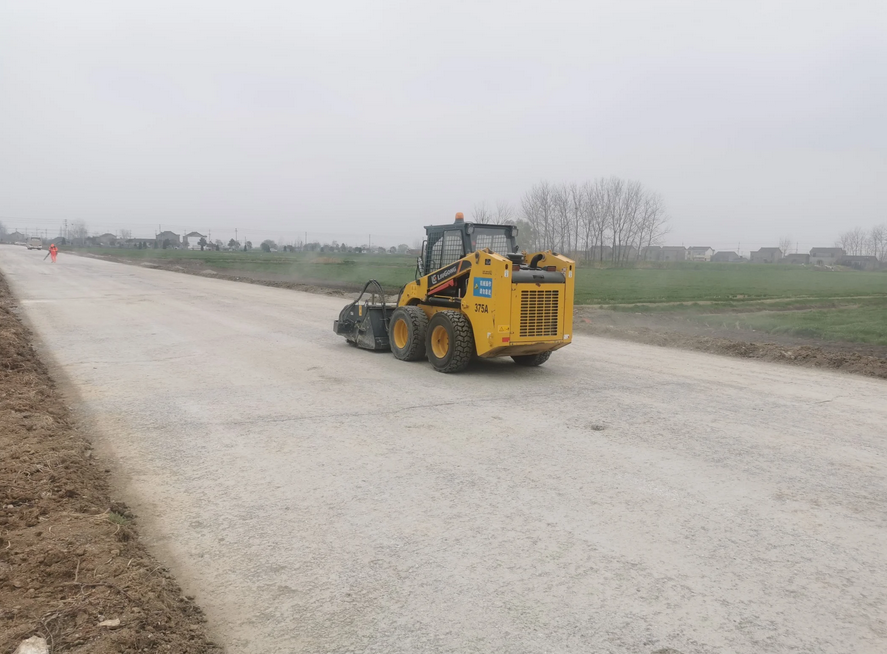
Grass cleaning
(3) Filling
(4) Use a forest fire extinguisher to blow away the dust in the cracks; Fill emulsified asphalt into cracks smaller than 5mm; fill hot asphalt into cracks larger than 5mm.
(5) Spray penetrating oil
(6) Within 0.75m on both sides of the crack , spray the through-layer emulsified asphalt at a dosage of 0.5kg/m2 asphalt.
(7) Laying out fiberglass grating
(8) Spread sticky layer oil on both sides of the crack Spread sticky layer emulsified asphalt at a dosage of 0.3kg/m2 asphalt within a range of 0.75m. After the emulsified asphalt is demulsified, spread 3~5mm stone chips at a dosage of 10kg/m2 and cover it with fiberglass mesh.
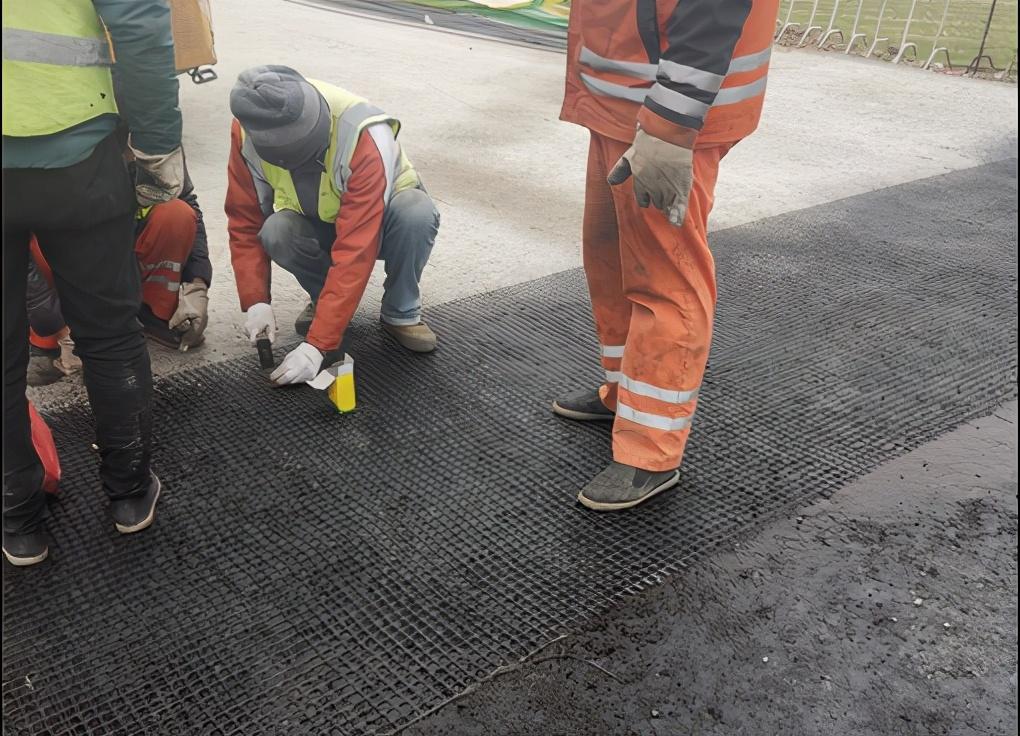
Fiberglass grating construction
3. Emulsified asphalt permeable layer
(1) Strictly inspect the base layer according to the acceptance specifications. If there are any areas that do not meet the requirements, deal with them immediately. Clean the base layer carefully and use a skid sweeper to clean it up.
(2) Before the construction of the asphalt mixture surface layer, emulsified asphalt needs to be sprayed on the surface of the base layer A layer of oil penetrates to consolidate, stabilize, connect and waterproof. The permeable layer oil uses medium-condensation liquid petroleum asphalt (AL(M)-2), and the dosage is 0.5kg~0.7kg/m2. After spraying, traffic will be completely closed, and no vehicles are allowed to enter the spraying section.
(3) When spraying, the amount of spraying at the vertical and horizontal overlaps is appropriate, and the amount of spray that cannot be sprayed is The local area adopts the method of manual re-sprinkling.
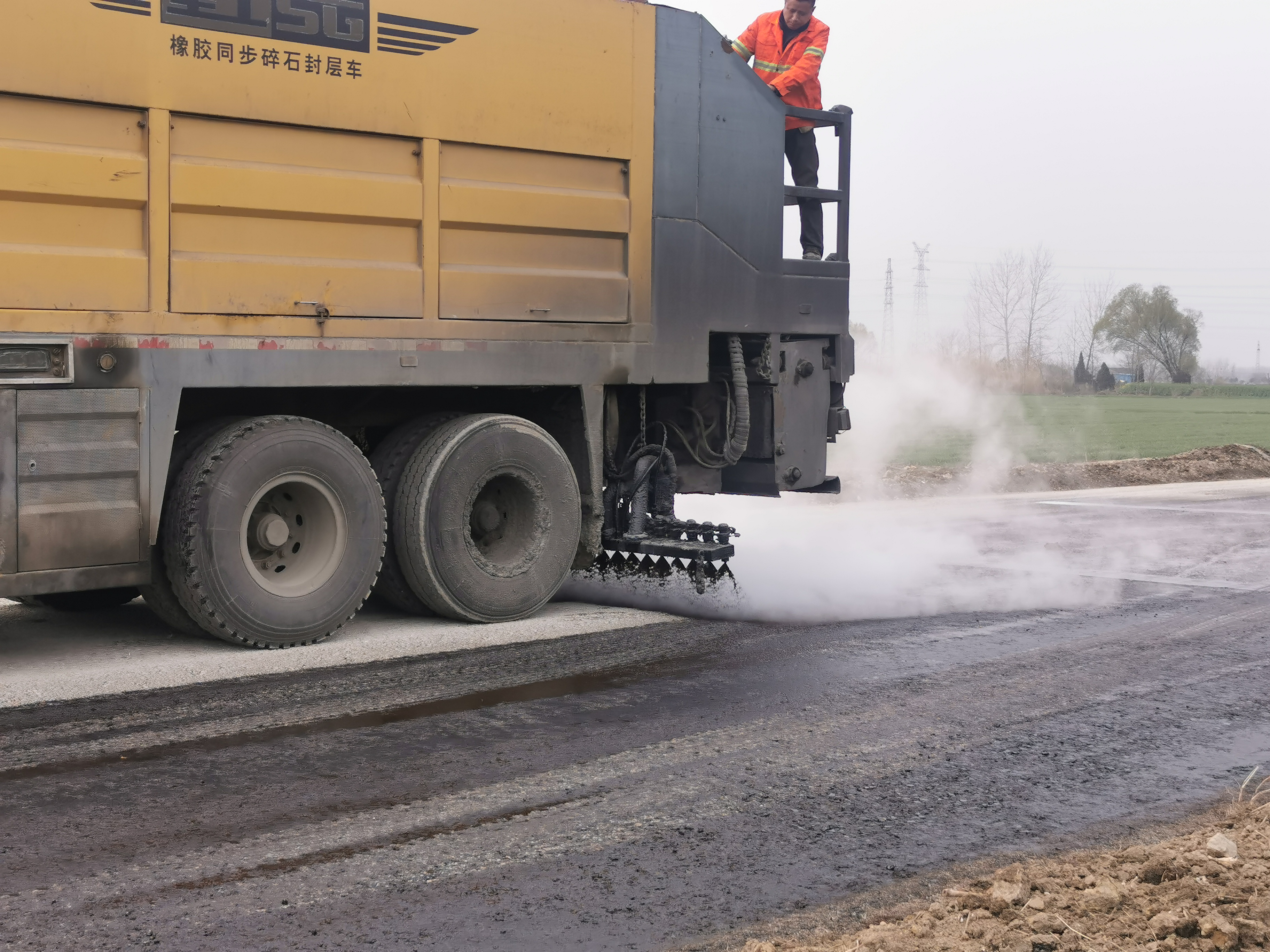
Transparent layer construction
4. Asphalt seal construction
(1) Carry out sealing construction after the penetration oil has completely penetrated.
(2) Spread the emulsified asphalt sealing layer.
(3) The asphalt seal uses slow-crack emulsified asphalt. The asphalt aggregate is made of limestone gravel, specification 14. The amount of emulsified asphalt sprayed is 0.6kg~0.8kg/m2 based on the amount of pure asphalt, and the amount of aggregate spread is 5m³-6m³/1000m2 (determined through experiments). After the stone chips are spread, they should be rolled once with a rubber tire roller immediately. Complete Sealing construction. After the sealing layer is completed, vehicle traffic should be restricted, and U-turns and sudden braking on the sealing layer should be prohibited.
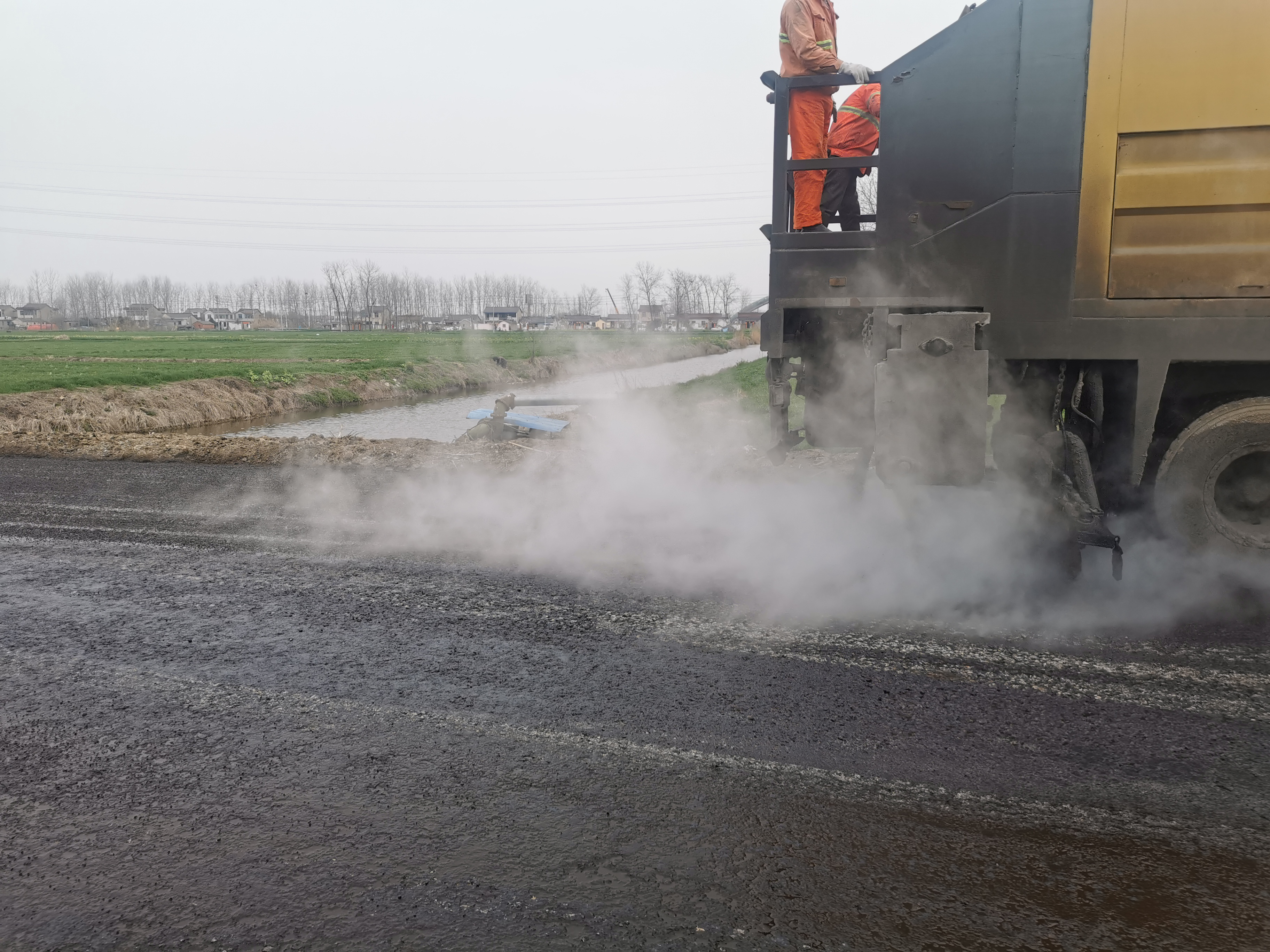
Synchronized gravel spreading
5. Asphalt mixture mixing
The asphalt mixture is mixed by a J4000 mixer. The heating temperature of the aggregate is controlled between 175 and 190°C, and then passes through the hot material lifting hopper. It is transported to the vibrating screen, screened by four different specifications of 33.5mm, 19mm, 13.2mm, and 5mm, and then stored in five hot ore bins. The asphalt is heated to 160-170°C using thermal oil. The five types of hot materials, mineral powder and asphalt materials are determined by the production mix design. Finally, the mineral powder is blown in and mixed until the asphalt mixture is uniform and all mineral particles are fully coated. Asphalt, the binder has no flowers, no agglomeration or lumps or serious segregation of coarse and fine materials. The mixing time of asphalt concrete is determined by trial mixing, and the temperature of the asphalt mixture leaving the factory is strictly controlled between 155 and 170°C.
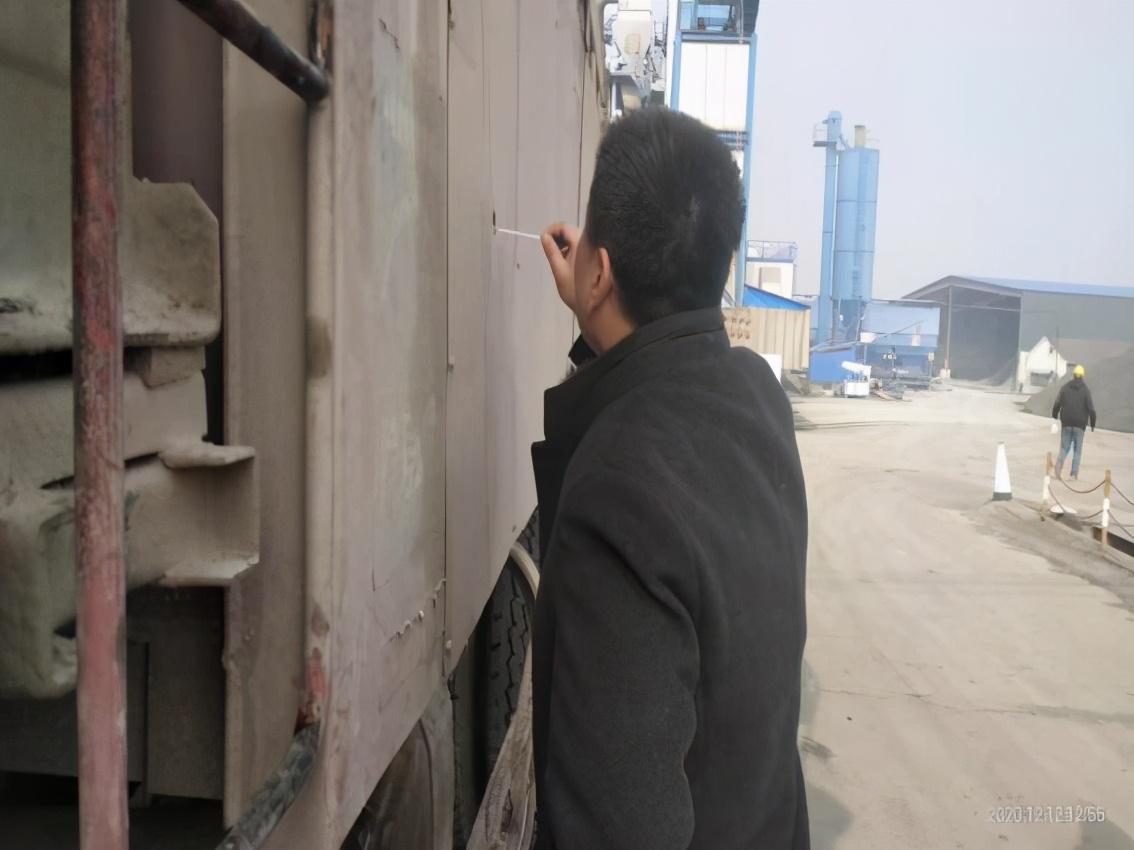
Pre-exit temperature testing
6. Hot mix asphalt transportation
(1) The transportation of asphalt mixture must be fast and safe, so that the temperature of the asphalt mixture arriving at the paving site is between 145°C and 165°C and check the mixing quality of the asphalt mixture. When the temperature of the incoming material does not meet the requirements or the silo is agglomerated or is wet by rain, it shall not be paved on the road.
(2) During the transportation of the mixture, the top of the mixture The surface is covered with waterproof felt cloth, which can effectively insulate the heat.
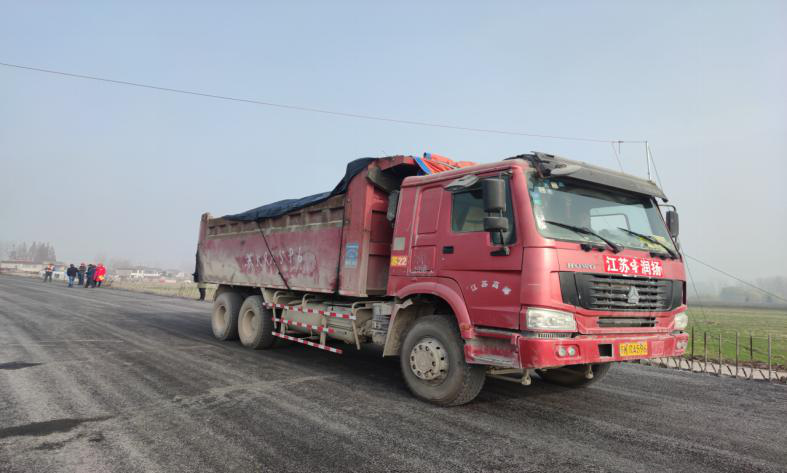
Transport vehicles
7. Hot mix asphalt paving
Before paving, preheat the screed 0.5 to 1 hour in advance to no less than 100℃.
When paving, check the quality of the base layer again. If the layer is insufficient or contaminated, the parts should be cleaned promptly and the sticky layer of asphalt should be applied. Pave the asphalt mixture on the working surface approved by the supervision engineer. When paving starts, there will be more than 3 asphalt mixture transport vehicles parked on site. The temperature of the mixture during paving shall not be lower than 140°C, and the paving speed shall be uniform. to minimize downtime. During the continuous paving process, the material transport truck stops 10 to 30cm in front of the paver when unloading to ensure that it does not hit the paver. At this time, the material transport truck is in neutral and is pushed forward by the paver.
The flatness of the lower layer will directly affect the paving of the upper layer The quality of construction is improved, and the thickness of the lower layer is adjusted at the same time to create good conditions for the paving of the upper layer. The lower layer is leveled using the balancing beam method. During the paving process, 1 to 2 people are assigned to check back and forth on site to prevent vehicles, construction workers and other machinery from touching the balancing beam.
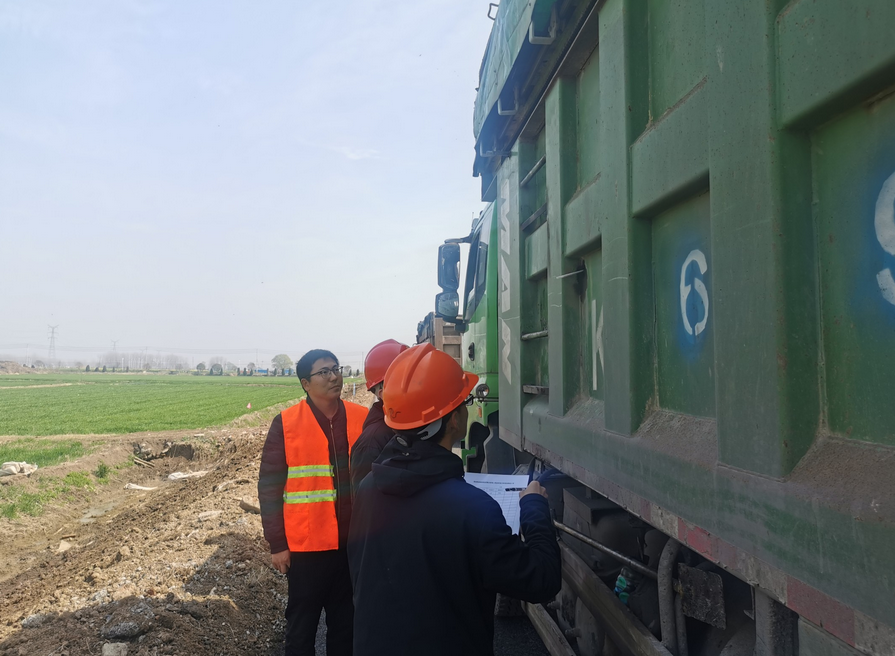
Temperature detection on arrival
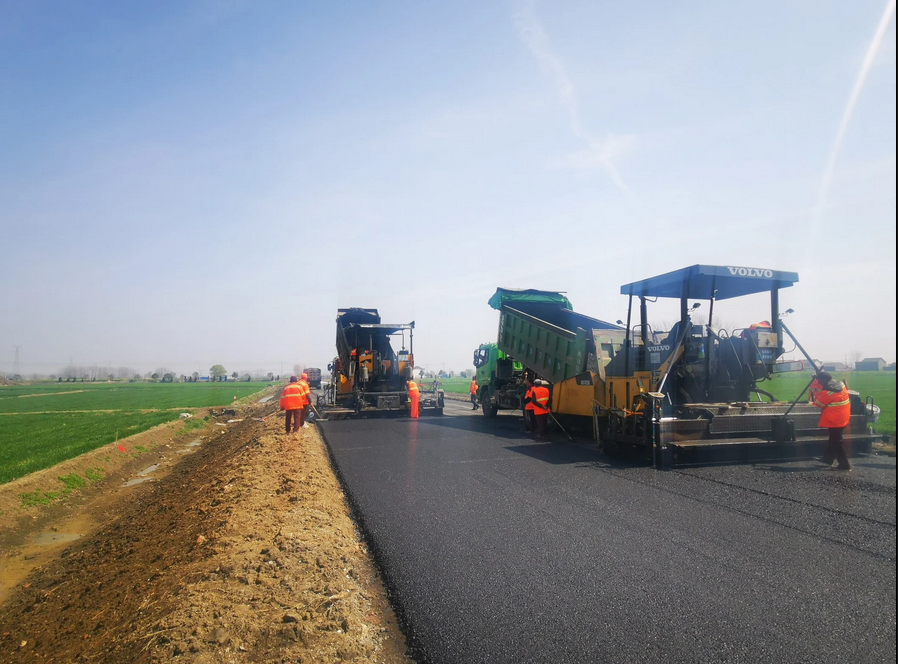
Asphalt mixture paving
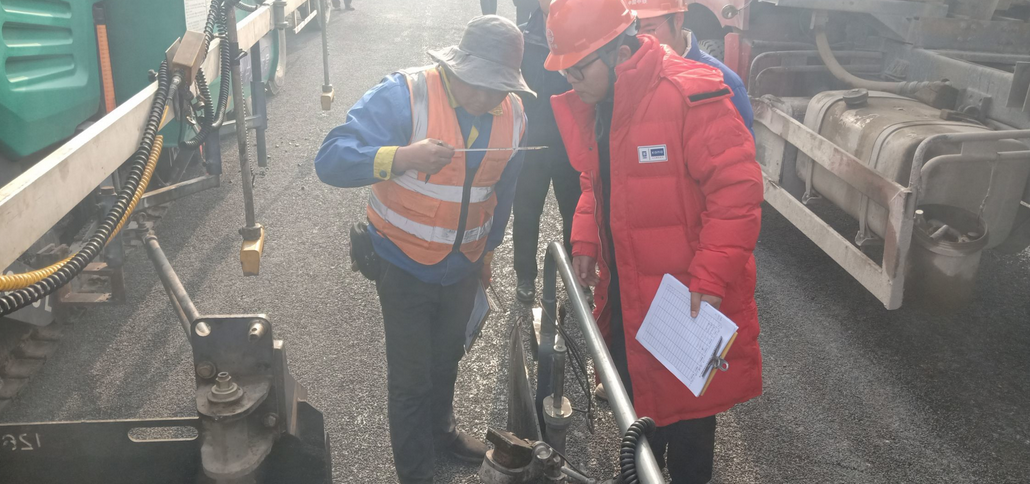
Paving temperature detection
8. Rolling of asphalt mixture
The initial pressing uses two double-steel vibratory rollers, which are static and vibrating once in front and back, and the driving wheels are rolled from low to high. The speed is 2km/h, and the total is two times;
Crush two heavy-duty tire rollers 3 times. The rolling speed is 3.5km/h, the rolling length is 50m, the incremental length is 10m, and the total is 6 times;
The final pressure uses a double-steel vibratory roller with a static pressure of 2 times, the rolling speed is 3.5km/h, the rolling length is 50m, and the incremental length is 20m.
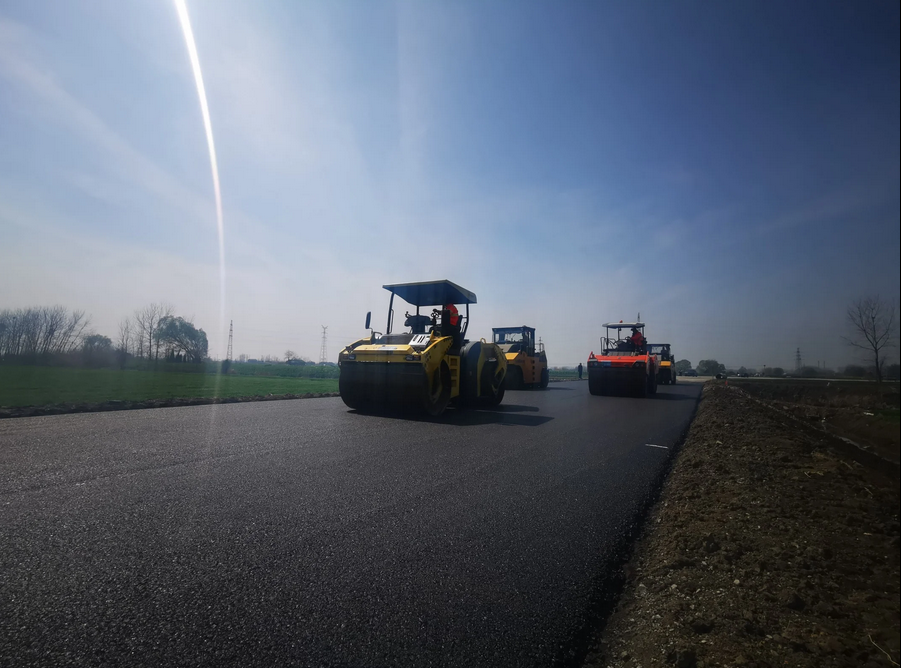
Mixed material rolling
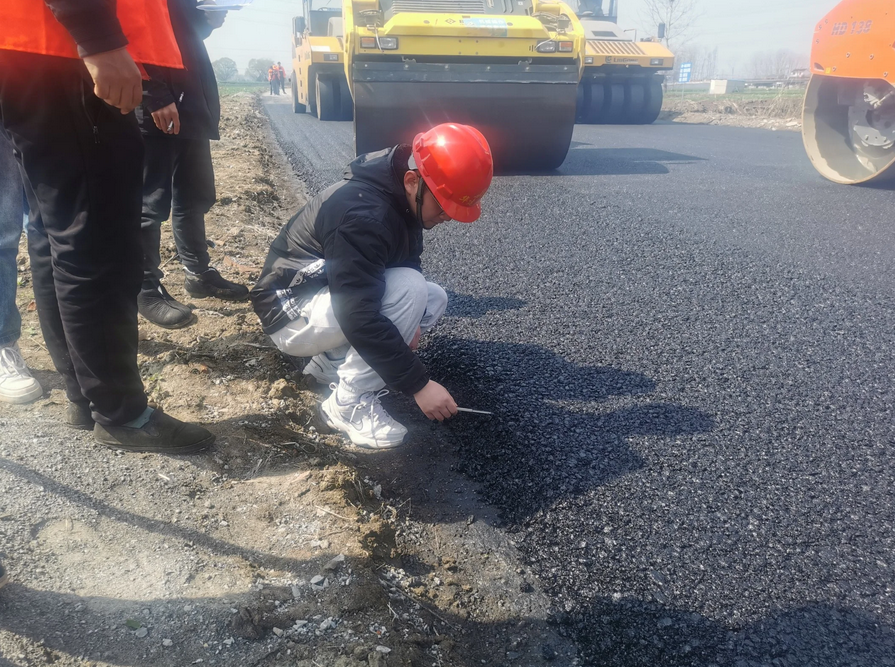
Paving temperature detection
9. Seams and trimming
(1) The longitudinal joints used in echelon operation during paving use thermal joints. During construction, leave 10 to 20cm wide of the paved mixed material portion without rolling it temporarily as the elevation datum of the subsequent paving portion, and finally roll it across the joints to eliminate seam marks.
(2) Flat seams should be tightly bonded. Fully compacted and smooth connection. The following methods can be used for construction: at the end of the construction, the paver will slightly lift the screed about 1 m before the end and drive away from the site, manually shovel the end mixture and then roll it. Then use a 3 m ruler to check the flatness, and before it has cooled down, vertically remove the parts whose flatness or layer thickness does not meet the requirements, so that they can be connected at right angles during the next construction.
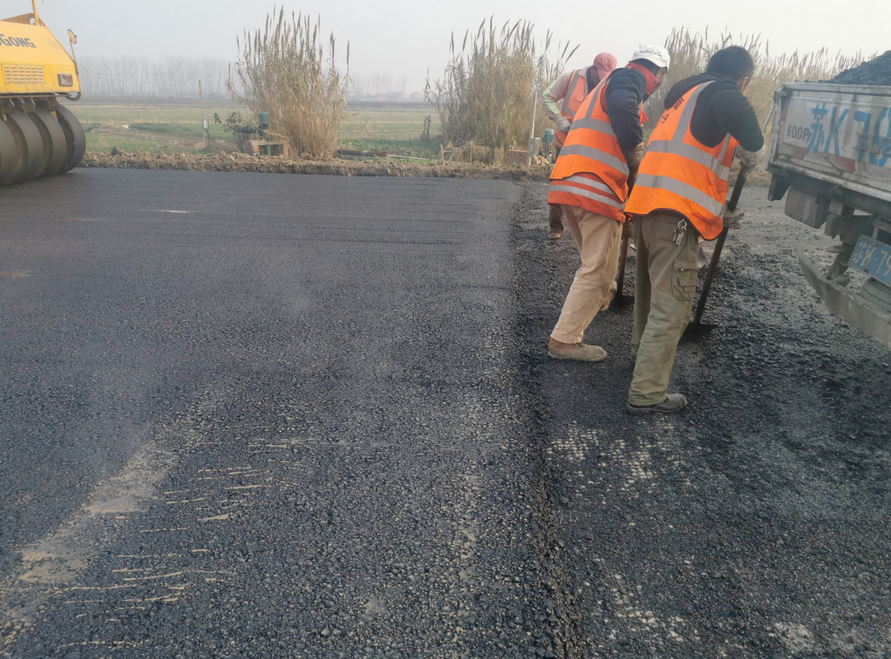
Connector processing
10. On-site test detection
After the paving of the lower asphalt layer is completed, on-site test tests include: molding thickness test, water permeability coefficient test, flatness test, and compaction test wait.
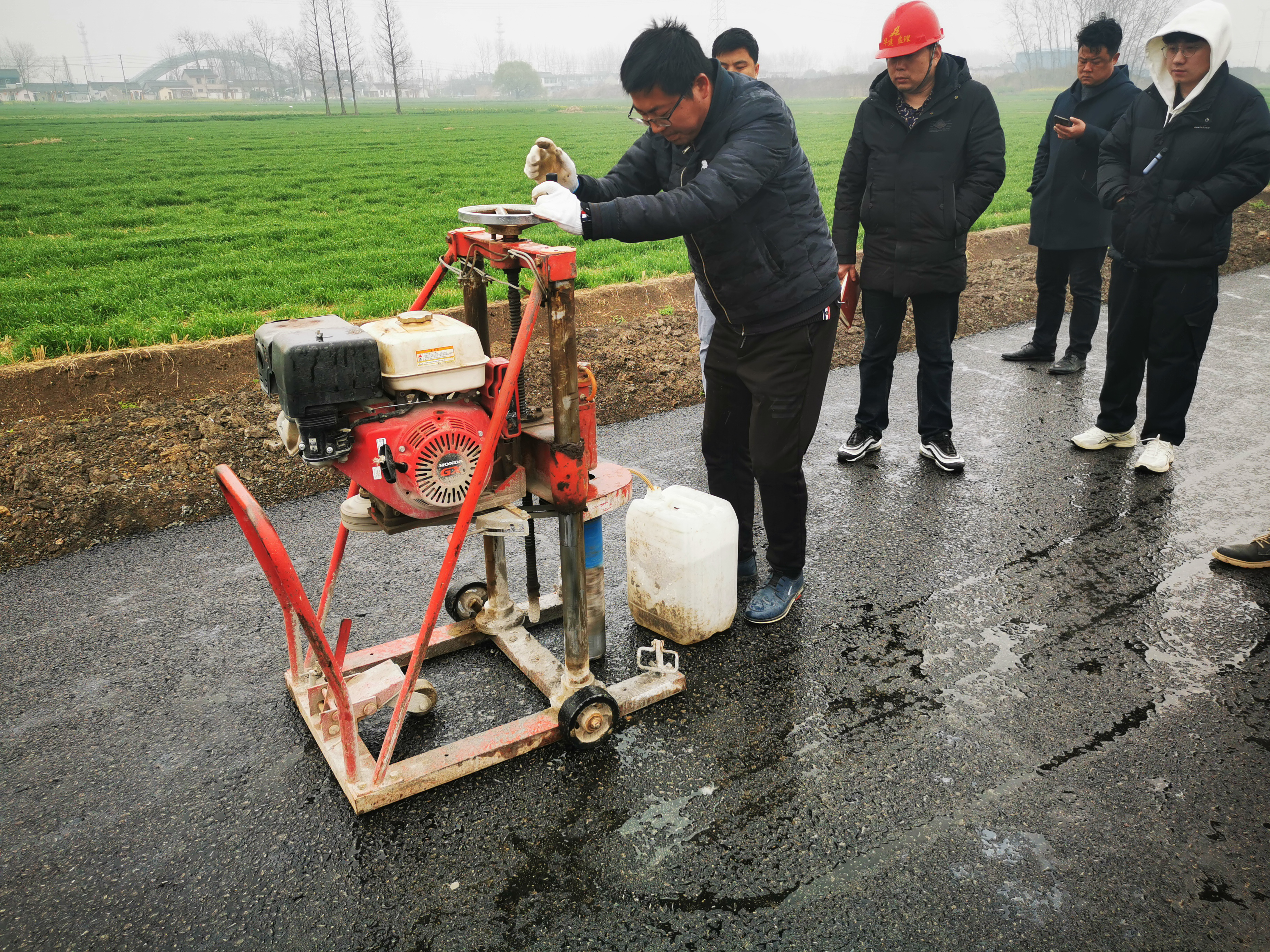
On-site coring
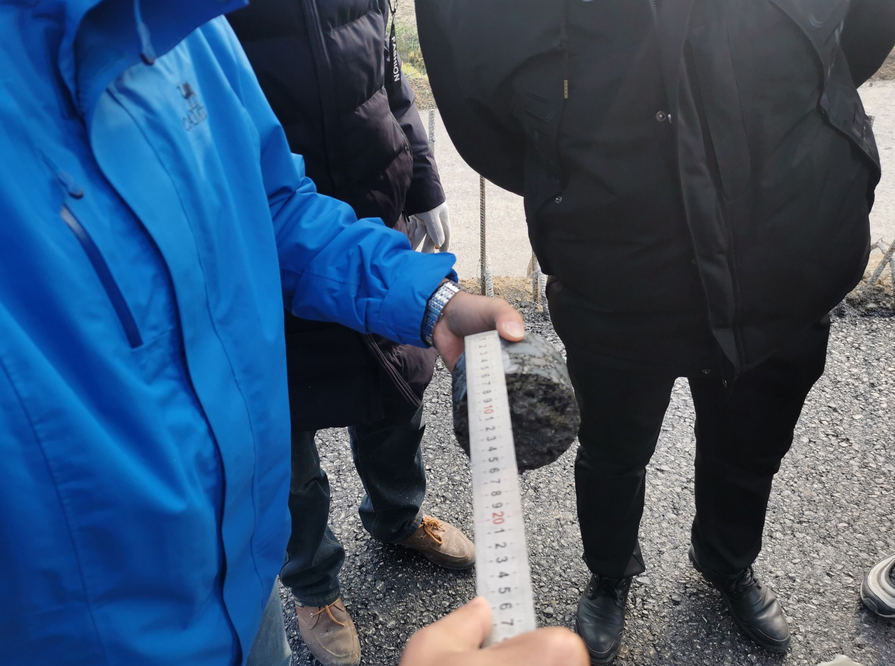
Thickness detection
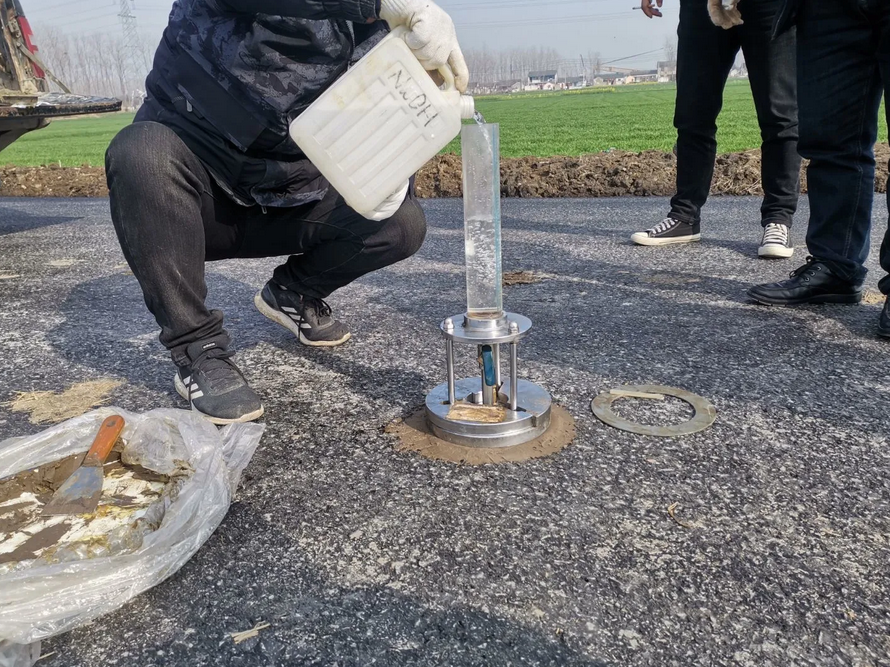
Water permeability coefficient detection
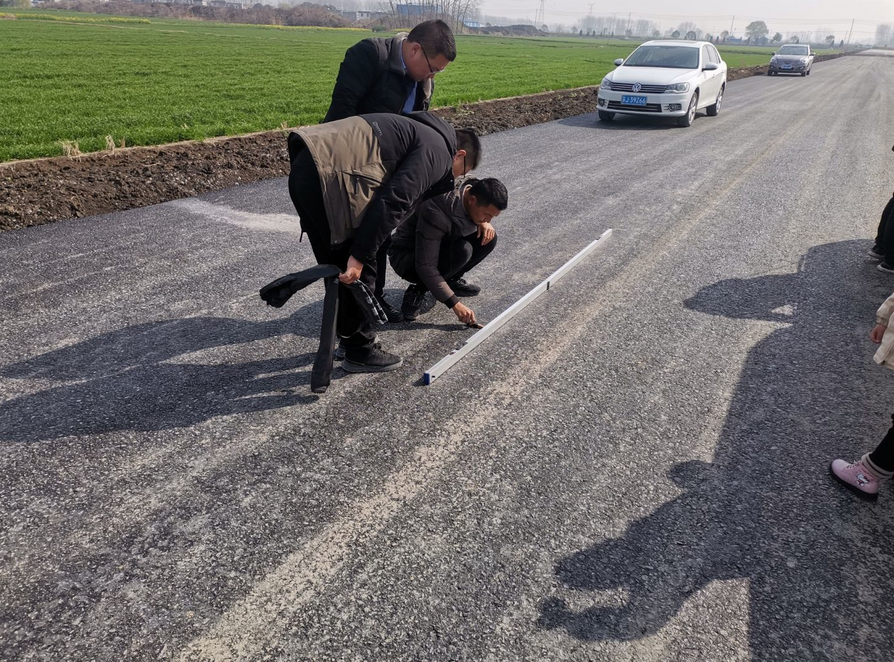
Flatness detection
Articles are uploaded by users and are for non-commercial browsing only. Posted by: Lomu, please indicate the source: https://www.daogebangong.com/en/articles/detail/li-qing-xia-mian-ceng-shi-gong-gong-yi-shuo-ming-ji-tu-pian.html

 支付宝扫一扫
支付宝扫一扫 
评论列表(196条)
测试